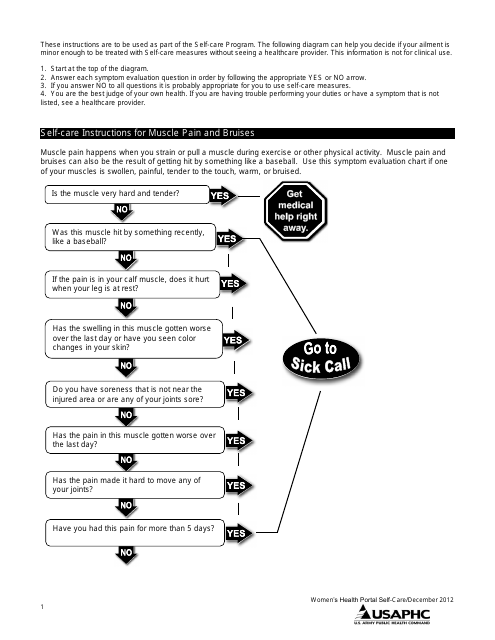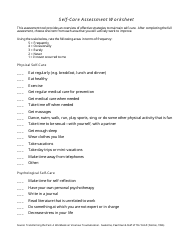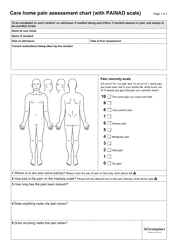Muscle Pain and Bruises Self-care Chart
The Muscle Pain and Bruises Self-care Chart is a document that provides guidance on how to take care of muscle pain and bruises on your own. It includes various self-care measures and remedies that can help alleviate pain and promote healing. The chart is meant to be a resource for individuals to manage these issues at home.
FAQ
Q: How can I relieve muscle pain?
A: Apply ice or heat to the affected area and take over-the-counter pain relievers.
Q: What should I do if I have a bruise?
A: Apply a cold compress to the bruise to reduce swelling and promote healing.
Q: When should I seek medical attention for muscle pain?
A: You should seek medical attention if the pain is severe, lasts longer than a few days, or is accompanied by other symptoms.
Q: How long do bruises usually take to heal?
A: Bruises typically heal within 1-2 weeks.
Q: Are there any home remedies to help with bruising?
A: Applying arnica gel or taking arnica supplements may help with bruising.
Q: Can stretching or exercising help with muscle pain?
A: Gentle stretching and low-impact exercise can help relieve muscle pain and prevent future injuries.
Q: Are there any lifestyle changes that can help prevent muscle pain and bruising?
A: Maintaining a healthy diet, staying hydrated, and wearing protective gear during physical activities can help prevent muscle pain and bruising.
Q: Should I avoid using the affected muscle if I have pain?
A: Resting the affected muscle and avoiding activities that worsen the pain is recommended to promote healing.
Q: Is it normal for a bruise to change colors?
A: Yes, bruises often change colors as they heal, starting with red or purple and gradually fading to yellow or green.
Q: Can medications cause muscle pain or bruising?
A: Certain medications, such as statins or blood thinners, may cause muscle pain or increase the risk of bruising.








